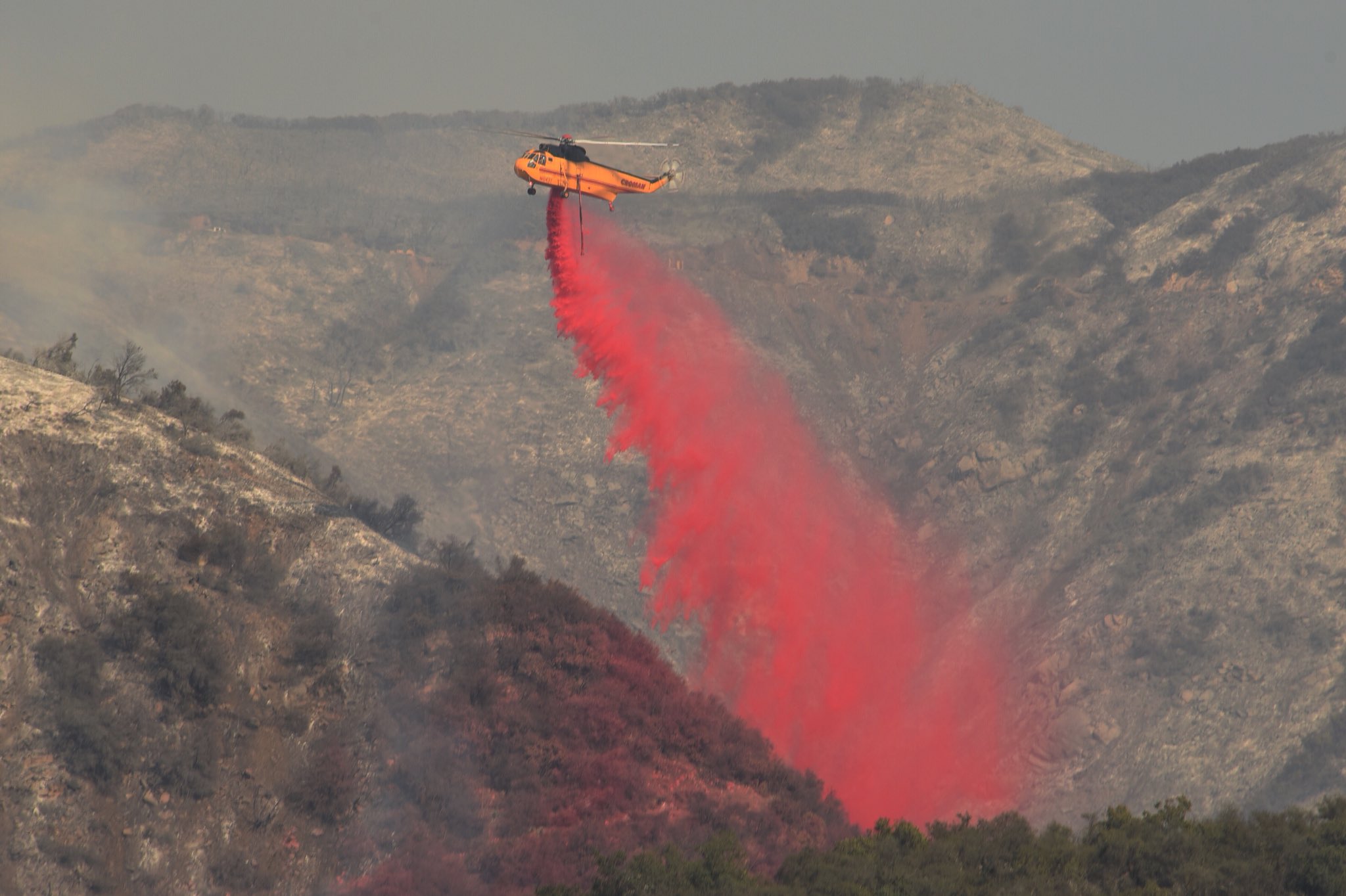Firefighters Plan to Attack Thomas Fire Before Winds Pick Up at 2 a.m.
Hand Crews Cut Fire Lines at San Ysidro Creek Overnight

The army of 8,369 firefighters currently battling the Thomas Fire is a national record, fire officials confirmed Friday. Three-quarters are on duty at any given time.
Firefighters were biting their nails Friday evening at the potential for down-canyon winds forecast for 2 a.m. Saturday morning. “If I’m not here tomorrow night, you’ll know why. I’ll be out here,” Santa Barbara County Fire Battalion Chief Chris Childers said, pointing to a map projected on the screen during Friday afternoon’s briefing at San Marcos High School. Red Flag Warnings were declared for Saturday from 2 a.m. to 10 p.m., with the most intensity predicted for 2-4 a.m., when winds could increase from 15 to 30 miles per hour with gusts up to 40 miles per hour.
The plan for Friday evening before the winds pick up is attack, attack, attack, fire officials emphasized. The tranquil conditions and clearer air in the last couple days have allowed about 30 helicopters to smother the Montecito foothills with retardant. About 736,000 gallons of retardant and just over 4 million gallons of water to date have dropped on the Thomas Fire.
On Friday night, 63 strike teams, totaling 315 engines, are on the fire. More than 150 firefighters will be cutting line all night near San Ysidro Creek above Montecito. As of Friday morning, the fire had crept west, and flames had jumped San Ysidro Creek. At Friday at 10 p.m., all crews and dozers will be pulled off the front lines, according to internal reports.
The 252,500-acre blaze is just 3,800 acres shy from being California’s third largest wildfire. It’s growing most rapidly to the north and east. About half is in the national forest, and one-fifth is in Santa Barbara County. It is 35 percent contained. “The most difficult part of the fire is always the last acres you are trying to get,” said Rocky Opliger, one of the incident commanders.
Captain Brendan Ripley, a fire behavior specialist, said partially mitigating forces could be the marine layer that hugs the ground and could somewhat counter down-canyon winds. The marine layer also increases the humidity. To seriously slow down the fire’s behavior, Ripley said, humidity needs to increase to about 40 percent. But, he added, “We’ll take it at about 19 percent.” In recent days, humidity was reported as low as one percent. With higher humidities, the fuel is not as explosive.
The plan announced Wednesday to burn 7,000 acres in a firing operation was terminated. Some back burning was done on Thursday and Friday, albeit to a much smaller degree. They said they simply don’t have the time; it takes about an hour to burn quarter mile. To carry out the plan — called “Plan C” for “Contingency” — they would have had to burn a total of eight miles of line.
Though hotshot crews are historically disbanded in November, the Thomas Fire Incident Command recently reestablished eight crews — each with 20 firefighters — to jump in.
The other good news Friday was voluntary evacuation zones were lifted for areas in and near Carpinteria — south of Highway 192, north of Highway 101, east of Linden Avenue and west of the Santa Barbara County line.
Childers, who has said his lighthearted candor and optimism have gotten him in trouble, remained hopeful Friday: “We hold this tonight; we hold this tomorrow; we are looking pretty good.”



